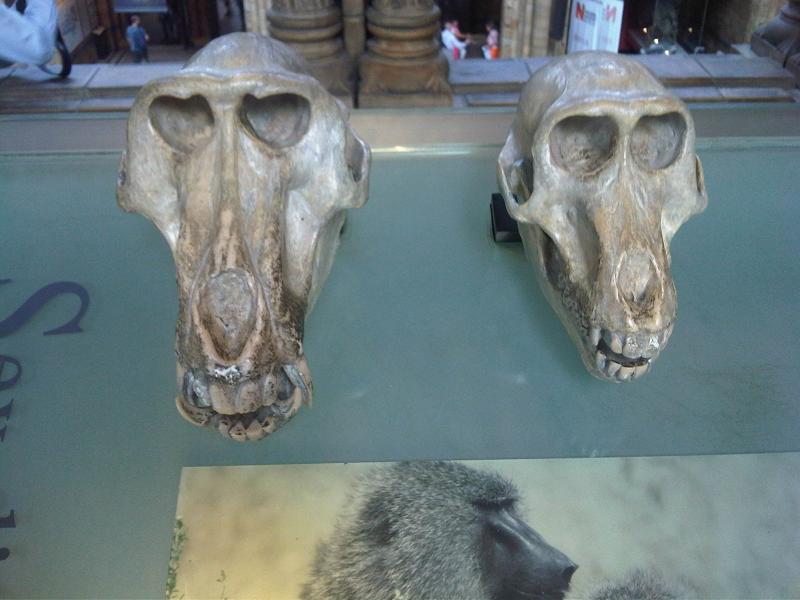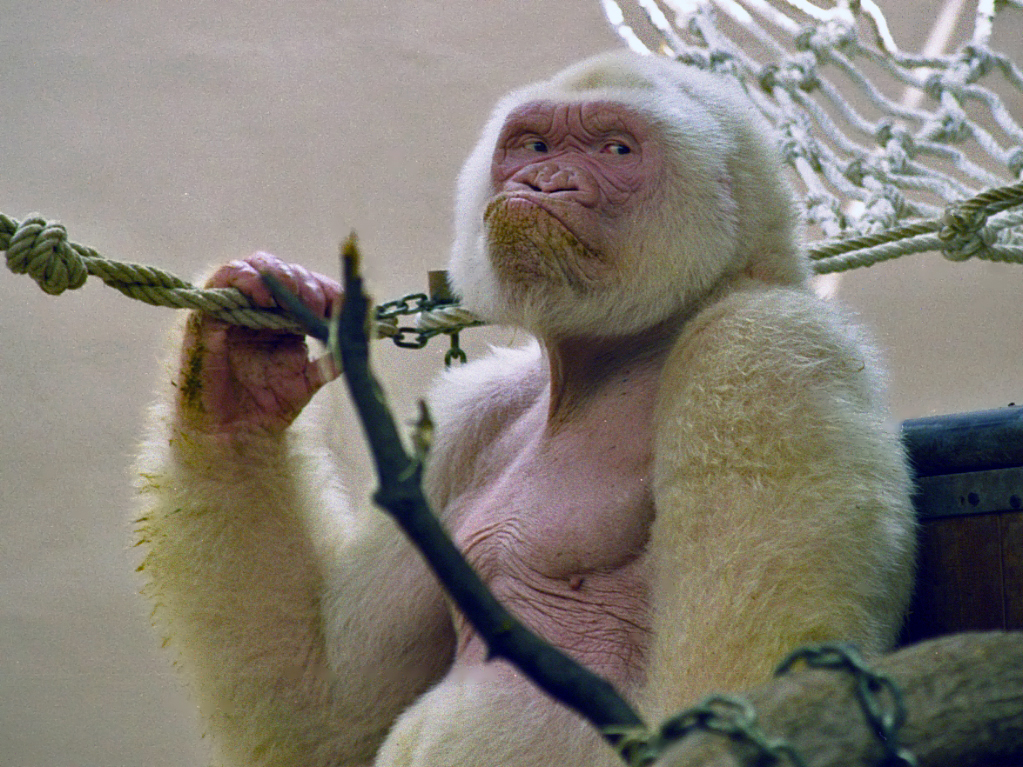|
Congolian Forests
The Congolian rainforests ( French: ''Forêts tropicales congolaises'') are a broad belt of lowland tropical moist broadleaf forests which extend across the basin of the Congo River and its tributaries in Central Africa. Description The Congolian rainforest is the world's second-largest tropical forest, after the Amazon rainforest. It covers over across six countries and contains a quarter of the world's remaining tropical forest. The Congolian forests cover southeastern Cameroon, Gabon, Republic of the Congo, the northern and central Democratic Republic of the Congo, and portions of southern and central Africa. The Congolian rainforest is home to a large number of flora and fauna, including more than 10,000 species of plants and over 10,000 species of animals. It is estimated that the region contains more than a quarter of the world’s plant species and is home to one of the world’s most threatened primate species, the western lowland gorilla. There are also a number of oth ... [...More Info...] [...Related Items...] OR: [Wikipedia] [Google] [Baidu] |
Okapi Wildlife Reserve
The Okapi Wildlife Reserve () is a wildlife reserve in the Ituri Forest in the north-east of the Democratic Republic of the Congo, near the borders with South Sudan and Uganda. At approximately 14,000 km2, it covers approximately one-fifth of the area of the forest. In 1996, the Okapi Wildlife Reserve was designated a UNESCO World Heritage Site, due to its large population of endangered okapis and its high overall biodiversity. Ecology The wildlife reserve makes up roughly one-fifth of the total area of the Ituri Forest. As a Pleistocene Refugium (population biology), refugium, the forest contains dense evergreen and semi-evergreen forests, dominated by ''Mbau'' trees (''Gilbertiodendron dewevrei''). The Nepoko River, Nepoko, Ituri River, Ituri, and Epulu River, Epulu rivers flow through the reserve, surrounded by swamp forests. Granite outcrops in the north of the reserve protect critical habitat for ''Encephalartos ituriensis'', a threatened species of cycad. Because of its ... [...More Info...] [...Related Items...] OR: [Wikipedia] [Google] [Baidu] |
French Language
French ( or ) is a Romance languages, Romance language of the Indo-European languages, Indo-European family. Like all other Romance languages, it descended from the Vulgar Latin of the Roman Empire. French evolved from Northern Old Gallo-Romance, a descendant of the Latin spoken in Northern Gaul. Its closest relatives are the other langues d'oïl—languages historically spoken in northern France and in southern Belgium, which French (Francien language, Francien) largely supplanted. It was also substratum (linguistics), influenced by native Celtic languages of Northern Roman Gaul and by the Germanic languages, Germanic Frankish language of the post-Roman Franks, Frankish invaders. As a result of French and Belgian colonialism from the 16th century onward, it was introduced to new territories in the Americas, Africa, and Asia, and numerous French-based creole languages, most notably Haitian Creole, were established. A French-speaking person or nation may be referred to as Fra ... [...More Info...] [...Related Items...] OR: [Wikipedia] [Google] [Baidu] |
Olive Baboon
The olive baboon (''Papio anubis''), also called the Anubis baboon, is a member of the family Cercopithecidae Old World monkeys. The species is the most wide-ranging of all baboons, being native to 25 countries throughout Africa, extending from Mali eastward to Ethiopia and Tanzania. Isolated populations are also present in some mountainous regions of the Sahara. It inhabits savannahs, steppes, and forests. The common name is derived from its coat colour, which is a shade of green-grey at a distance. A variety of communications, vocal and non-vocal, facilitate a complex social structure. Characteristics The olive baboon is named for its coat, which, at a distance, is a shade of green-grey. At closer range, its coat is multicoloured, due to Agouti (coloration), rings of yellow-brown and black on the hairs. The hair on the baboon's face is coarser and ranges from dark grey to black. This coloration is shared by both sexes, although males have a mane of longer hair that tapers dow ... [...More Info...] [...Related Items...] OR: [Wikipedia] [Google] [Baidu] |
Red Colobus
Red colobuses are Old World monkeys of the genus ''Piliocolobus''. It was formerly considered a subgenus within the genus '' Procolobus'', which is now restricted to the olive colobus. They are closely related to the black-and-white colobus monkeys (genus ''Colobus''), and some species are often found in groups with the blue monkey. The western red colobus is frequently hunted by the common chimpanzee. The members of this genus are found in western, central and eastern Africa, and the species have largely allo- or parapatric distributions. They are primarily arboreal and most are restricted to humid forests, but the Zanzibar red colobus prefers coastal thickets and scrub. Red colobuses are highly sensitive to hunting and habitat destruction, and have been referred to as probably the most threatened taxonomic group of primates in Africa. If following the taxonomic treatment advocated in ''Mammal Species of the World'', all species except the Udzungwa, Semliki, Oustalet' ... [...More Info...] [...Related Items...] OR: [Wikipedia] [Google] [Baidu] |
Black Colobus
The black colobus (''Colobus satanas''), or satanic black colobus, is a species of Old World monkey belonging to the genus ''Colobus''. The species is found in a small area of western central Africa. Black colobuses are large, completely covered with black fur, and like all other Colobus monkeys, do not have a thumb. The species has faced large declines in population due to habitat destruction and hunting by humans, and was consequently listed as Vulnerable on the IUCN Red List in 1994. Taxonomy The black colobus monkey is one of five recognised species in the genus ''Colobus''. The black colobus is the oldest species in this genera and is thought to have diverged 3-4 million years ago. There are two subspecies of black colobus monkey: *''Colobus satanas satanas'' – Bioko black colobus ( Waterhouse, 1838) *''Colobus satanas anthracinus'' – Gabon black colobus (Le Conte, 1857) Etymology The word '' 'Colobus' '' comes from the Greek word for 'mutilated', as all Colobus mon ... [...More Info...] [...Related Items...] OR: [Wikipedia] [Google] [Baidu] |
Chimpanzee
The chimpanzee (; ''Pan troglodytes''), also simply known as the chimp, is a species of Hominidae, great ape native to the forests and savannahs of tropical Africa. It has four confirmed subspecies and a fifth proposed one. When its close relative the bonobo was more commonly known as the pygmy chimpanzee, this species was often called the common chimpanzee or the robust chimpanzee. The chimpanzee and the bonobo are the only species in the genus Pan (genus), ''Pan''. Evidence from fossils and DNA sequencing shows that ''Pan'' is a sister taxon to the Human evolution, human lineage and is thus humans' closest living relative. The chimpanzee is covered in coarse black hair but has a bare face, fingers, toes, palms of the hands, and soles of the feet. It is larger and more robust than the bonobo, weighing for males and for females and standing . The chimpanzee lives in groups that range in size from 15 to 150 members, although individuals travel and forage in much smaller grou ... [...More Info...] [...Related Items...] OR: [Wikipedia] [Google] [Baidu] |
Western Lowland Gorilla
The western lowland gorilla (''Gorilla gorilla gorilla'') is one of two Critically Endangered subspecies of the western gorilla (''Gorilla gorilla'') that lives in Montane ecosystems#Montane forests, montane, Old-growth forest, primary and secondary forest, secondary forest and lowland swampland in central Africa in Angola (Cabinda Province), Cameroon, Central African Republic, Republic of the Congo, Democratic Republic of the Congo, Equatorial Guinea and Gabon. It is the nominate subspecies of the western gorilla, and the smallest of the four gorilla subspecies. The western lowland gorilla is the only subspecies kept in zoos with the exception of Amahoro (gorilla), Amahoro, a female eastern lowland gorilla at Antwerp Zoo, and a few mountain gorillas kept captive in the Democratic Republic of the Congo. Description The western lowland gorilla is the smallest subspecies of gorilla but still has exceptional size and strength. This species of gorillas exhibits pronounced sexual ... [...More Info...] [...Related Items...] OR: [Wikipedia] [Google] [Baidu] |
Amazon Rainforest
The Amazon rainforest, also called the Amazon jungle or Amazonia, is a Tropical and subtropical moist broadleaf forests, moist broadleaf tropical rainforest in the Amazon biome that covers most of the Amazon basin of South America. This basin encompasses , of which are covered by the rainforest. This region includes territory belonging to nine nations and 3,344 Indigenous territory (Brazil), indigenous territories. The majority of the forest, 60%, is in Amazônia Legal, Brazil, followed by Peruvian Amazonia, Peru with 13%, Amazon natural region, Colombia with 10%, and with minor amounts in Bolivia, Ecuador, French Guiana, Guyana, Suriname, and Venezuela. Four nations have "Amazonas (other), Amazonas" as the name of one of their first-level administrative regions, and France uses the name "Guiana Amazonian Park" for French Guiana's protected rainforest area. The Amazon represents over half of the total area of remaining rainforests on Earth, and comprises the largest a ... [...More Info...] [...Related Items...] OR: [Wikipedia] [Google] [Baidu] |
Tropical Forest
Tropical forests are forested ecoregions with tropical climates – that is, land areas approximately bounded by the Tropic of Cancer, tropics of Cancer and Tropic of Capricorn, Capricorn, but possibly affected by other factors such as prevailing winds. Some tropical forest types are difficult to categorize. While forests in temperate climate, temperate areas are readily categorized on the basis of tree canopy density, such schemes do not work well in tropical forests. There is no single scheme that defines what a forest is, in tropical regions or elsewhere.Anatoly Shvidenko, Charles Victor Barber, Reidar Persson et al. 2005 "Millennium Ecosystem Assessment." Ecosystems and human wellbeing: a framework for assessment Washington, DC: Island Press Because of these difficulties, information on the extent of tropical forests varies between sources. However, tropical forests are extensive, making up just under half the world's forests. The tropical domain has the largest proportion of ... [...More Info...] [...Related Items...] OR: [Wikipedia] [Google] [Baidu] |
Sapele Tree Congo Brazzaville
''Entandrophragma cylindricum'' is a tree of the genus ''Entandrophragma'' of the family ''Meliaceae''. It is commonly known as sapele or sapelli ( ) or sapele mahogany, as well as aboudikro, assi, and muyovu. Origin of the name The name ''sapele'' comes from the city of Sapele, Delta, Sapele in Nigeria, where the tree flourishes. African Timber and Plywood (AT&P), a division of the United Africa Company, had a factory at this location where the wood, along with ''Triplochiton scleroxylon, African whitewood and'' mahogany, African mahogany was processed into timber which was then exported from the Port of Sapele. The name of the city itself is said to be an Anglicisation (linguistics), anglicisation of the Urhobo language, Urhobo word ''Uriapele'', which commemorates a local deity. It is believed the British colonial authorities changed the name of the city to Sapele as it was easier to pronounce.[No source found] Description ''Sapele'' is native to tropical Africa. There ar ... [...More Info...] [...Related Items...] OR: [Wikipedia] [Google] [Baidu] |
Central Africa
Central Africa (French language, French: ''Afrique centrale''; Spanish language, Spanish: ''África central''; Portuguese language, Portuguese: ''África Central'') is a subregion of the African continent comprising various countries according to different definitions. Middle Africa is an analogous term used by the United Nations in its United Nations geoscheme for Africa, geoscheme for Africa and consists of the following countries: Angola, Cameroon, Central African Republic, Chad, Democratic Republic of the Congo, Republic of the Congo, Equatorial Guinea, Gabon, and São Tomé and Príncipe. The United Nations Office for Central Africa also includes Burundi and Rwanda in the region, which are considered part of East Africa in the geoscheme. These eleven countries are members of the Economic Community of Central African States (ECCAS). Six of those countries (Cameroon, Central African Republic, Chad, Equatorial Guinea, Gabon, and Republic of the Congo) are also members of the ... [...More Info...] [...Related Items...] OR: [Wikipedia] [Google] [Baidu] |







